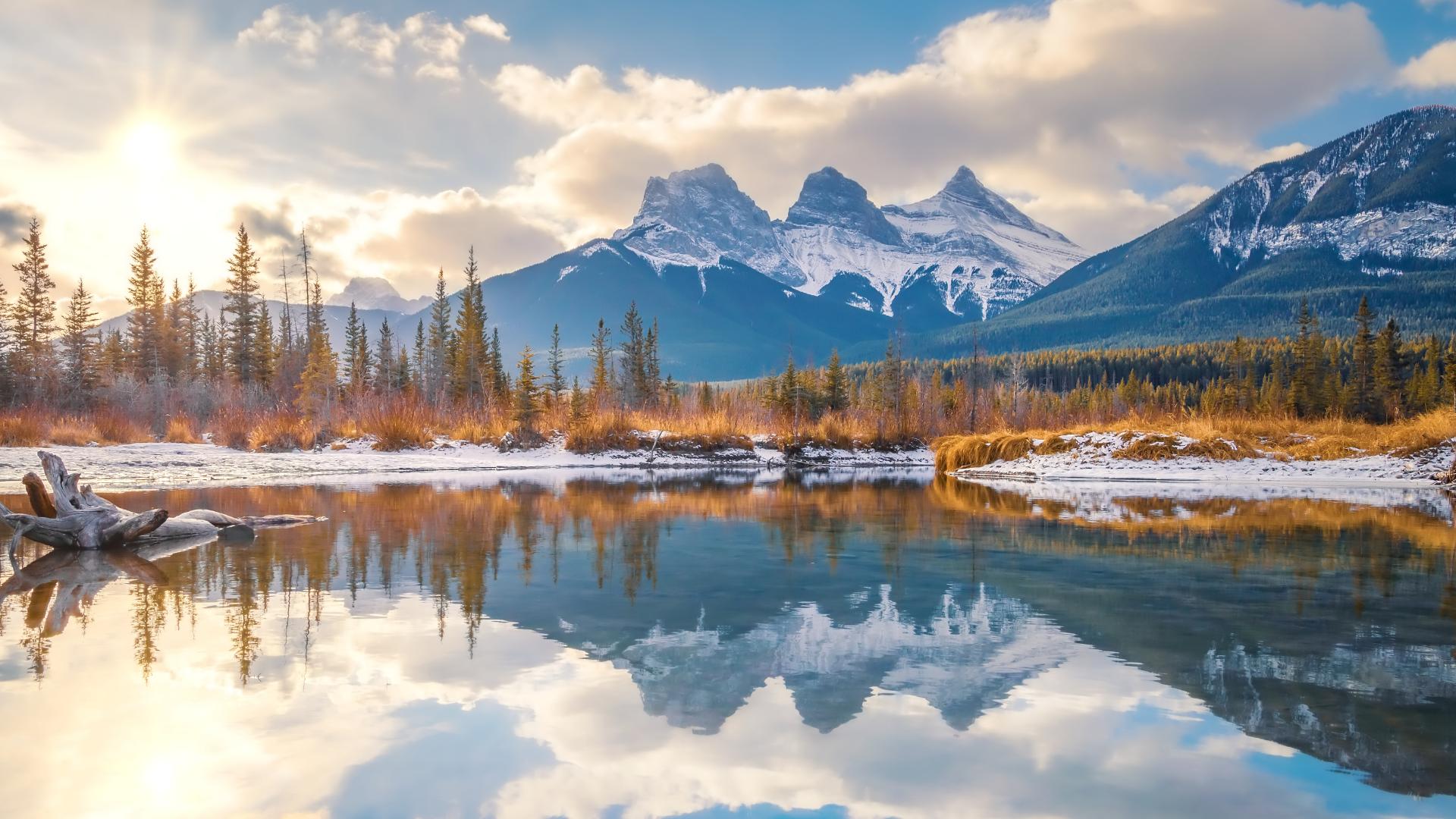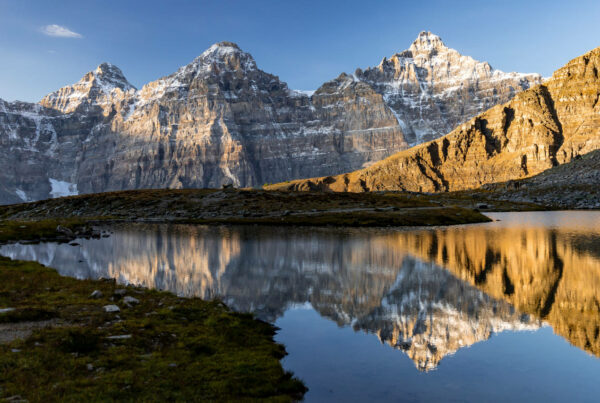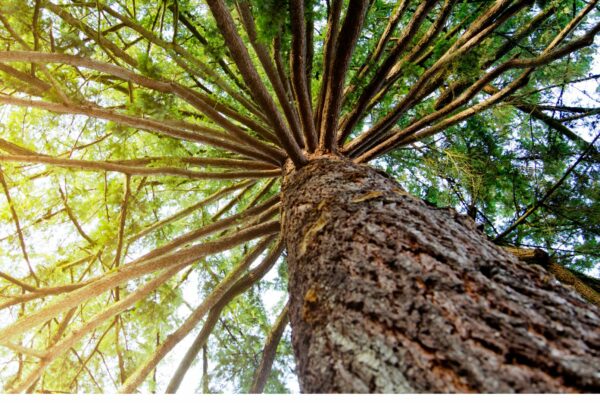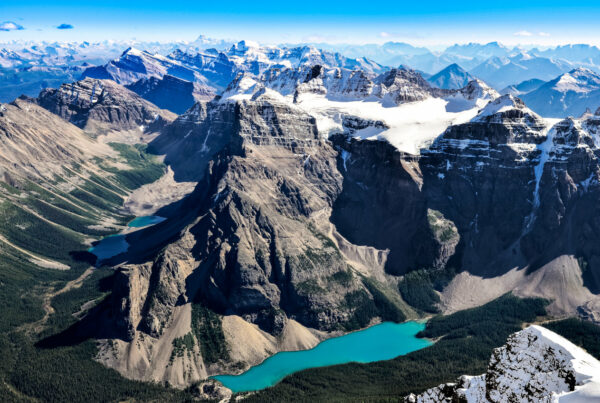In 1883, Albert Rogers who was a nephew of the legendary railway surveyor Major A.B. Rogers (Rogers Pass near Revelstoke is named after him) named the three distinctive peaks towering over the town of Canmore the Three Nuns as the peaks covered in snow in the winter look like a nun’s headdress.
He is quoted as saying, “There had been quite a heavy snowstorm in the night, and when we got up in the morning and looked out of the tent I noticed each of the three peaks had a heavy veil of snow on the north side and I said to the boys, ‘Look at the Three Nuns’.”
In 1886, the 3 peaks were renamed the Three Sisters by the geologist and surveyor George Mercer Dawson when he drew up the official map of the area because he thought the Three Sisters name was more in the spirit of Protestantism.
They are each named after important cardinal virtues:
1. Big Sister (Faith)
2. Middle Sister (Charity)
3. Little Sister (Hope)
The Big Sister (Faith) is the tallest at 2,936 m (9,632 feet) and the first peak of the Three Sisters can be hiked in a day from Stewart Creek.
It is the most visible peak you can see in the Bow Valley in the distance as you drive Highway 1 toward the Canadian Rockies and the top can be seen as far away as the summit of Prairie Mountain halfway to Calgary.
A First Nations Story of the Three Sisters
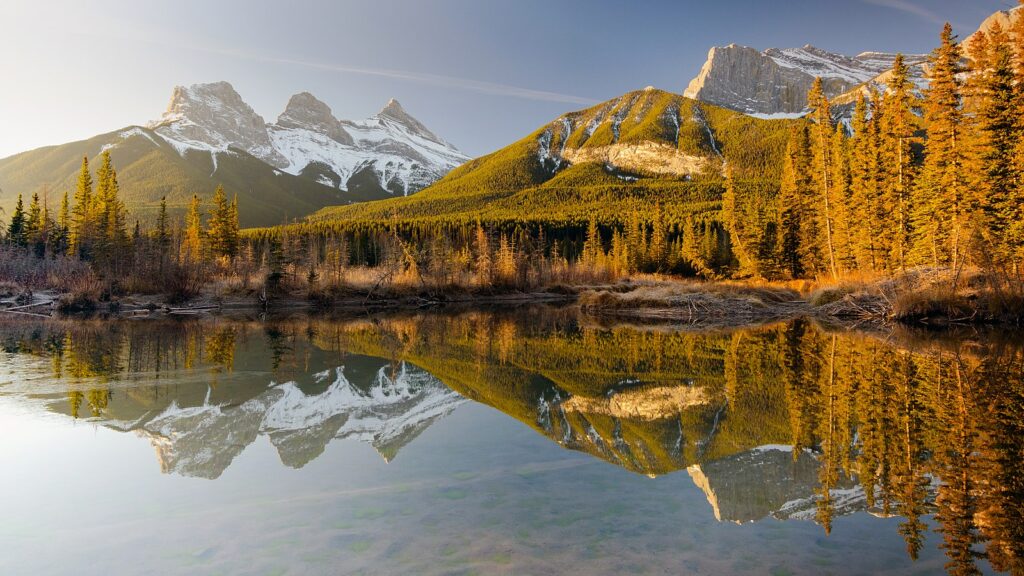
In the traditional language of the Stoney Nakoda (Îyârhe Nakoda), the peaks are also referred to as Čũgudn gičiyabi ča ya mnĩ, which also means the Three Sisters.
Their name refers to the story of Ĩ-ktomnĩ, an old man or trickster, who would promise the Three Sisters in marriage whenever he was in trouble.
So, there you have two stories and perspectives on the Three Sisters. You may never look at them the same way again.
Why The Mountains Around Banff And Canmore Are So Amazing
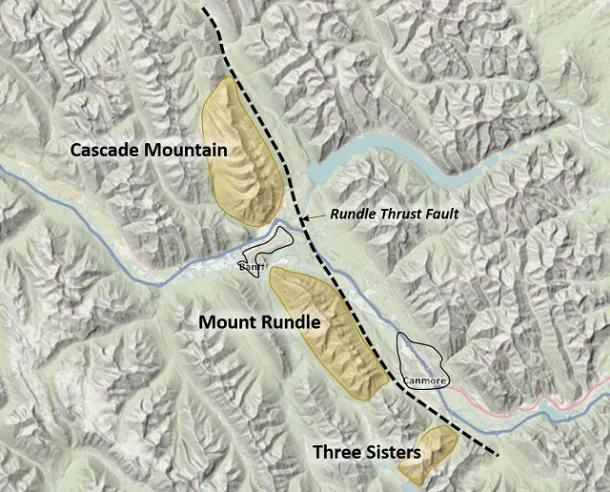
The Rundle Fault is 50 kilometres (30 miles) in length and extends from just northwest of Cascade Mountain in Banff to the just southeast of the Three Sisters in Canmore.
These mountains formed along the same thrust fault 75 million years ago. To learn more about this unique geological thrust fault, I recommend reading Dave Slaght’s excellent article in his Travel Tales of Life blog.
- How To Become A Group Experiential Learning Facilitator Outdoors - May 14, 2025
- The 10 Best Hikes And Multi-Day Treks In Jasper National Park - May 10, 2025
- 10 Best Peru Hiking Tours And Multi-Day Treks In The Andes - April 19, 2025


